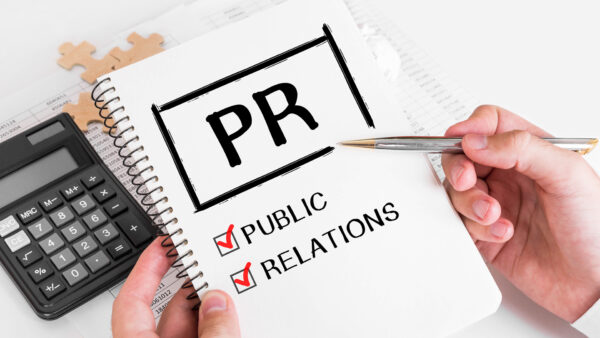The name is one of your most valuable brand assets. That’s how your customers remember, know, and refer to your business, and that’s how they get it.
A total of 75% of people will pay more for a product whose name is recognized and trusted.
On the business side, the introduction of names plays an important role in securing funds as 82% of investors recognize that it is an important factor in investment decisions.
In this guide, we will see the main characteristics of unforgettable names, as well as the main principle experts used when naming a brand.
Top Characteristics Of Successful Brand Names
Most world-famous brands have shared the quality playing for their identity and abilities. These qualities will help you score critically the option and guide you in the process of naming your brand:
1. Good Brand Names Are Simple And Memorable
Most create a strong business identity and branding strategy is to find a name that can be remembered by the target audience.
A study that viewed 700 shares traded between 1990 and 2004, and concluded that brands with simple names obtained at least 11% more than complex.
There are many examples to support this. Think:
- Dove
- Olay
- Twix
- Pepsi
- Nike
- Reebok
- Apple
- HP
2. Successful Names Are Futureproof
Business and brand developing, so when it comes with brand name ideas that will not be fast, it’s important to think about the big picture.
In other words: Don’t use a very specific brand name if you are not sure how your business will brand in the future.
For example, women’Secret is a specific name for women’s clothing brands that will make it difficult to diversify offering and serve the demographic of men under the same roof.
Amazon, on the other hand, is the main example of a company that exceeds its original goals but has a fairly flexible name to cover a very diverse inventory, the company is now known.
3. Good Brand Names Are Original
Following the main principles of great, but in the end, your brand name must represent your unique identity.
Your name can tell a story, bring heritage or entertain.
Take Adidas: The unique name is inspired by the Fulma Adolph “Adi” the name Dassler.
BMW is an acronym for native German names that are very unknown Bayerische Motoren Werke.
The more you learn about them, the more you realize that every great brand name has a unique story behind it.
How To Come Up With A Brand Name Using These Key Principles
The main approach to giving your brand name is to start with big ideas and then become small and specific. That is why, before thinking about the real name, there are some things that need to be defined first.
Focus On Your Audience
77% of shoppers buy from brands that share the same values.
Knowing your target audience will help you:
- Find inspiration: Identify your target market’s favorite brands and draw inspiration for your own.
- Find a voice: Let your audience help you find your identity and voice. This will play an important role in name selection.
- Connect: Basing your name on your target market’s preferences will increase your brand’s likeability.
In particular, brands that target audiences are generally unfamiliar with the types of products or services they offer more often using abstract names to convey moods or activities related to them. Because their demographics are low on product knowledge or services, this is all about selling brands – not a product or service.
The brand with high knowledge buyers has the name “muted” that allows customers to focus more on product quality and measurable service rather than relying on names.
Fashion brands, for example, are often named after their founders (Dior and Chanel, for example). Their name implies and highlights quality rather than projecting associations or images.
In terms of high knowledge buyers, it is an intrinsic quality of the products sold. That name is a factor, but not as big as.
Find Your Brand Archetype
The Arketype concept comes from Jungian psychology and is often applied to branding ideas. It refers to universally familiar characters that help infuse brands with personalities that can be connected by customers.
To apply this concept with your name, start by thinking about you:
- Audience’s collective persona: Who is this persona? What do they look like? What do they sound like?
- Brand’s persona: How does it (or will it) resemble that of your audience’s persona or their aspirations?
There are twelve main brand archetypes:
- The Innocent (the desire for safety)
- Everyman (belonging)
- Hero (mastery)
- Outlaw (liberation)
- Explorer (freedom)
- Creator (innovation)
- Ruler (control)
- Magician (power)
- Lover (intimacy)
- Caregiver (service)
- Jester (enjoyment)
- Sage (understanding)
To find your archetype, consider these questions:
- What brand values do you want to communicate?
- Is there a historical/mythical personification of the said values?
- Do you want to bring a sense of luxury or affordability to your customers?
- What are the non-verbal and emotional associations you want to create for your brand?
Here are some real-life examples of archetypes used to build a brand image:
- Nike: This well-known apparel label is also the name of the ancient Greek goddess who personified victory.
- Dove: Doves conjures the images of purity and softness – qualities of the Innocent archetype.
- Channel: A brand of the Lover archetype maintains an amorous atmosphere in marketing campaigns.
Companies build the meaning of the name through stories, products, marketing activities and visual associations.
Some of these names use phonetic symbolism to support their archetype.
Check The Availability Of A Potential Business Name
57% of customers say they’re more likely to buy from a brand they follow on social media. Businesses must strive to choose a name that is available across platforms.
- Do a domain name search with multiple providers.
- Look for companies using similar name on social media like Facebook, Instagram and Twitter.
- Make sure your potential names are not trademarked.
- Think carefully about the extension of your internet domain – make .com, .net and .org a priority, if they are available.
When viewing the availability of your name desired the name and registration of the website domain, remember that, thanks to the sophisticated SEO and brand signal, it is not as important as longer to choose a brand name based on the domain name available when used to be.
Tips For Generating Brand Name Ideas
When considering how to generate brand name ideas that speak to your audience persona and represent your Arketype, there are certain principles that make the process slimmer and simpler:
- Keep the brand name simple: Ideally, it should be a two-syllable word as they have a better-staying power in the minds of customers.
- The name should also be descriptive: the reason why archetypes convey emotions with people is that they capture the collective essence and experience. That’s how descriptive a brand name should be – it should communicate essence, experience and benefits of the brand’s products in a suggestive manner.
- Use word association to brainstorm good brand name ideas: Write down as many words as you can think of that are in some way associated with your brand. These can be combined or narrowed down to a few which can be worked on and tested.
- The name should be trendy, but not too much trendy: Something that is “in” today may be completely “out” tomorrow. Strive to have a name that contemporary people can relate to and that will endure the years ahead.
Final Takeaways For Coming Up With A Brand Name
The main benefits of coming up with a good name are:
- It adds value to your products and services
- It lends identity to your business
- Good brands become synonymous with products they make
- It drives sales and revenue
What are the traits of a successful brand name?
- They are simple and memorable
- They are future-proof
- They are original
The main steps to consider when coming up with a brand name are:
- Collect the broad set of ideas of what it is that makes your business. Think about your story, your origins and your big ambitions and ideas.
- Think of a name that caters to the aesthetics and values of your audience as well as your business ambitions.
- Tap into your brand archetype and your audience persona to find your voice and messaging.
- The brand tone should speak to your audience and reflect your business tendencies.
- When brainstorming the name ideas, try to be trendy, but not overly trendy.


